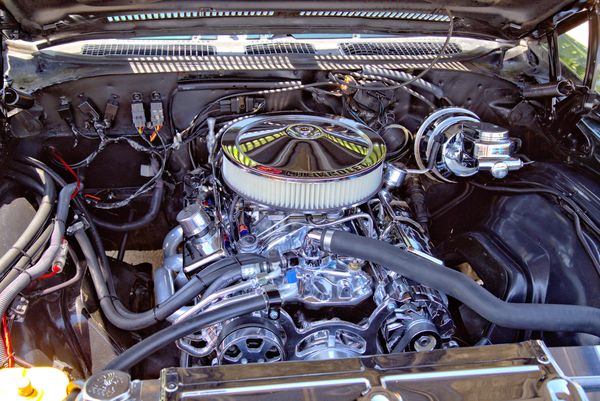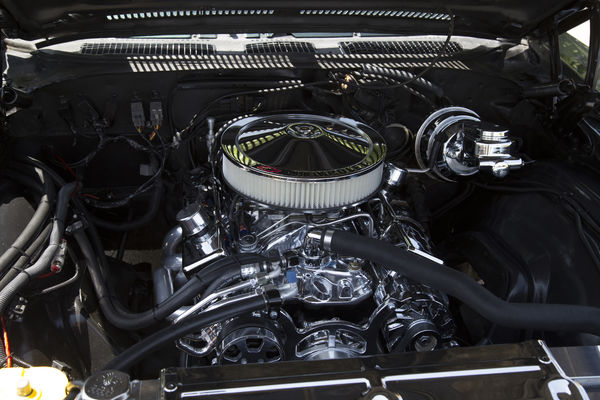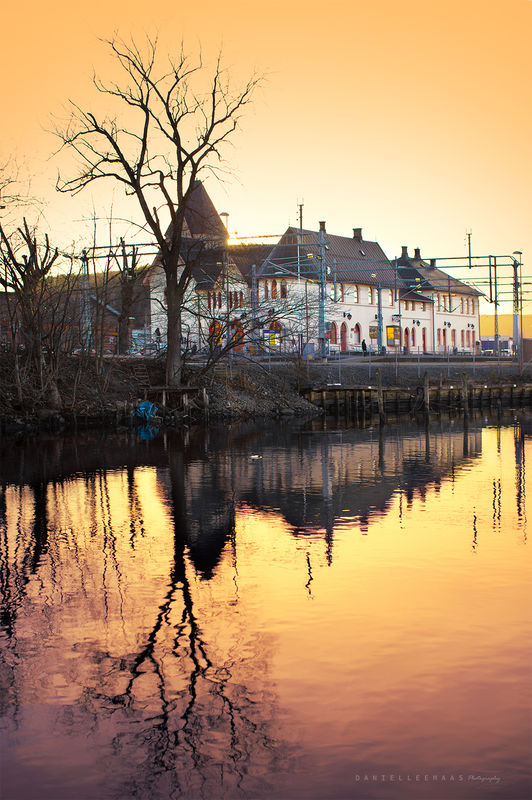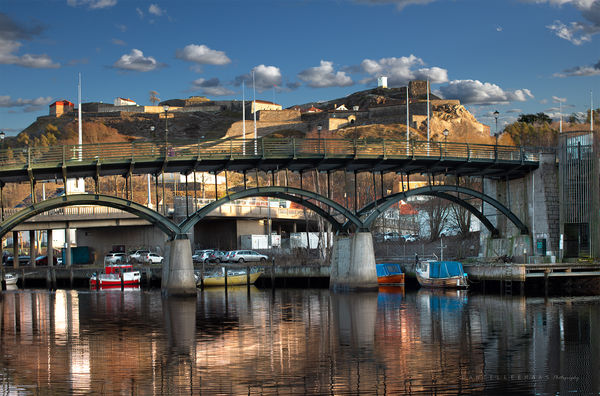HDR, over and under with one image.
Jan 9, 2019 17:10:42 #
There has been many things posted about this idea, but I'd enjoy hearing specifics from those of you who have made this a study. Has it worked for you? And if so, did you do the over-exposure and under-exposure of the same image, while in RAW?
Teaching my students about the extreme dynamic range of your eyes/vision, I want to impact them to understand that even the best of cameras capture only a microscopic portion of that. But we can expand that with HDR, to make great improvements of our captures.
I would never argue that the absolute best way to do this is to shoot 3, or 5, or more, at the same time. However to do that, a tripod would be most helpful. But as I have traveled, a tripod is frequently forbidden. But a good overall single capture can be achieved with a good camera, and a good photographer. So let's talk about ways of taking this idea to the next level .... one capture and three images via RAW
Teaching my students about the extreme dynamic range of your eyes/vision, I want to impact them to understand that even the best of cameras capture only a microscopic portion of that. But we can expand that with HDR, to make great improvements of our captures.
I would never argue that the absolute best way to do this is to shoot 3, or 5, or more, at the same time. However to do that, a tripod would be most helpful. But as I have traveled, a tripod is frequently forbidden. But a good overall single capture can be achieved with a good camera, and a good photographer. So let's talk about ways of taking this idea to the next level .... one capture and three images via RAW
Jan 9, 2019 17:23:56 #
WDN2
Loc: SF Bay Area
I have had pretty good luck in the past by taking a raw image and saving it as tiffs, going 5 stops in each direction at 1-stop intervals. It's not quite the same as doing bracketed shots with a tripod, but sometimes a tripod isn't an option. YMMV. Hope this helps.
Jan 9, 2019 17:30:09 #
Thanks WDN2. What we must all keep in mind is the power of a RAW file. It can and will capture data that is not apparent in the single "taken shot", no matter how we captured that original single shot. One needs only take the image, push the exposure seriously upward and the dark areas explode with detail. The same things happens with those 'burned out' regions, that actually contain much data.
Jan 9, 2019 17:39:31 #
Technical question: if you create several TIFFs at different exposures then "combine" them, is that any different than masking the raw file and adjusting the exposure for the various masked layers? Also, some software like LightZone works on EV levels, so would adjustments there not achieve the same "HDR effect"?
Jan 9, 2019 17:45:43 #
I'm not familiar with LightZone. I'm a straight away Photoshop user since before any CS versions. I'm also learning Photomatrix.
Jan 9, 2019 18:50:32 #
larryepage
Loc: North Texas area
HDR photography is made up of two components...capturing a wider range of tonal values, then displaying that wide range of values on a limited medium like paper and ink. Since most modern cameras can capture a much wider range than can be printed, it is completely reasonable to work to make that wide range "displayable." Whether that is done by splitting and recombining the original image or simply by adjusting the response curves, it fits the definition of HDR.
Jan 9, 2019 19:39:11 #
elliott937 wrote:
There has been many things posted about this idea,... (show quote)
Corel's Paint Shop Pro has an app to do just that, and it only works with RAW files. Many don't know it is there since it is under the "manage" tab, not the adjust or edit tab. From manage click on "File" and down the menu that appears you will see "HDR" that opens an HDR sub menu. If the image is not RAW or a form of RAW PSP recognizes the line "Single raw photo" will be grayed out.
Here is an image of a '71 El Camino engine at a car show in May 2015.
#1 theHDR corel produced.
#2 the OOC done with a Canon 6D and 24-105L f/4 lens in very bright sunlight outdoors.
Jan 9, 2019 22:19:49 #
elliott937 wrote:
There has been many things posted about this idea,... (show quote)
My HDR technique has evolved since I started shooting with the Nikon D850 and better quality Fx lenses.
I used to do 3 exposures +- 2 stops. I also have perfected a hand held technique, putting the camera in high speed mode and rapidly squeezing off 3 shots. Snug the camera into your grip and just hold steady.
Lately, since I have started using the Nikkor 14-28 f/2.8 I have found that I only really need the -2 and 0 exposure shots, as the +2 is just too bright for use. Unless I am doing an interior shot in a large church or similar structure.
Next, I am going to try +- 1 stop and see what works.
And, I've found that more than 3 images just doesn't work for me.
Jan 9, 2019 23:13:49 #
elliott937 wrote:
There has been many things posted about this idea,... (show quote)
Interesting idea.
Do it and report back.
Don't forget the "store original" check box.
.
Jan 10, 2019 06:38:53 #
catchlight..
Loc: Wisconsin USA- Halden Norway
Did these two last afternoon and evening with three stops in each. I think some like to argue about ETTR with a single shot, but it is so logical to expose in steps and then post possess.
Jan 10, 2019 07:26:03 #
If you want to do HDR with sports, auto racing or any fast moving subject it is about the only way to do it...
Jan 10, 2019 07:41:36 #
Single shot is the only way if you are shooting moving subjects
Works fairly well in my opinion. Image #2 and 3
Norm
https://www.uglyhedgehog.com/t-74987-1.html
Works fairly well in my opinion. Image #2 and 3
Norm
https://www.uglyhedgehog.com/t-74987-1.html
Jan 10, 2019 09:04:03 #
Jan 10, 2019 09:20:58 #
kaerophil
Loc: Oxford, CT
rgrenaderphoto wrote:
My HDR technique has evolved since I started shoot... (show quote)
I do 3 exposures +- 2 stops, usually hand held and have had great results.
Jan 10, 2019 10:51:23 #
photoman022
Loc: Manchester CT USA
I was out yesterday and took this photo. I shoot in RAW and expose for the sky. I then take the original RAW file (adjusted in Adobe Camera RAW) and then adjust for the shadows as needed in ACR. I do a photo merge in PhotoShop Elements and further adjust the lighting as needed and then use the High Pass Filter to sharpen.
The Farmington River Railroad Bridge, Windsor, CT USA.
The Farmington River Railroad Bridge, Windsor, CT USA.
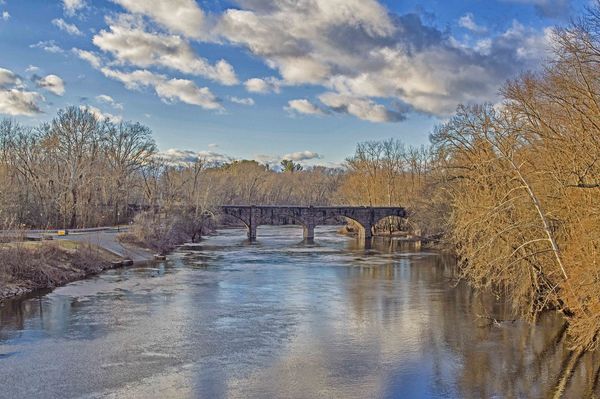
If you want to reply, then register here. Registration is free and your account is created instantly, so you can post right away.


